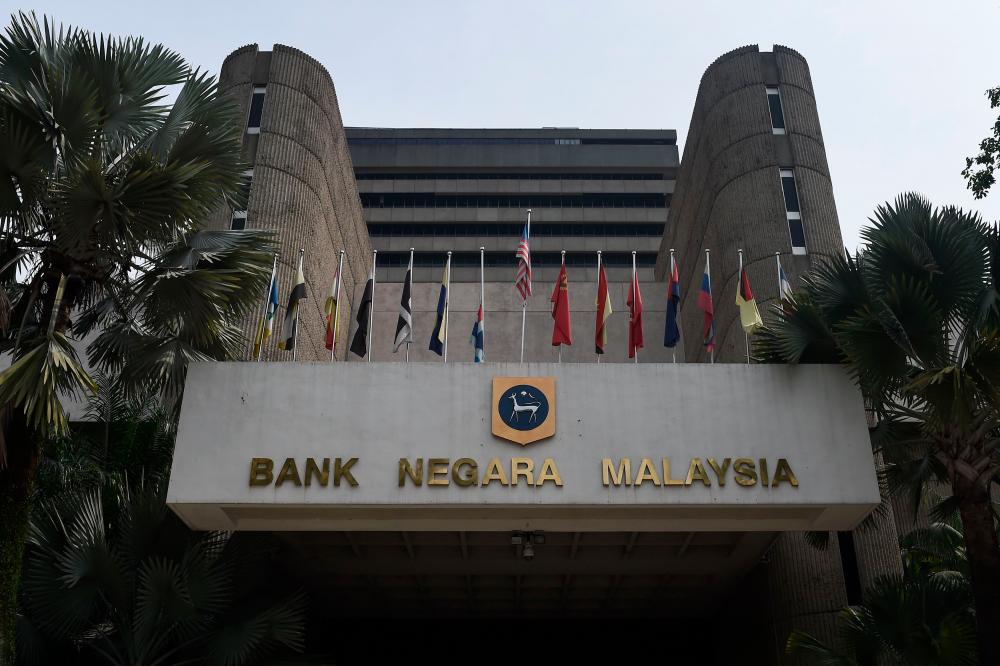PETALING JAYA: Despite a cut in the Overnight Policy Rate (OPR) being widely expected by the market, economists and analysts alike, the announce-ment of a 25 basis point reduction in the benchmark interest rate today was labelled “surprising”.
OCBC Treasury Research economist Wellian Wiranto said the “out-of-left field” nature of the cut and a tell-tale wariness on both global and domestic growth drivers in Bank Negara Malaysia’s (BNM) statement signal that this may not be the last cut for the year – especially if economic momentum does not pick up.
“At the broad level, Bank Negara Malaysia’s cut today can be seen as its way to help juice up growth at a time when fiscal measure is limited and any structural reform may be curtailed by a relative pickup in political uncertainties. We had highlighted before that the 4.8% 2020 growth target that underpins the fiscal assumption is too optimistic, and we reckon growth is likely to be closer to the 4.2% that we expect.
“Even with today’s cut, the official growth assumption may still be hard to reach, especially if global trade flows become curtailed again. Hence, this is unlikely to be BNM’s last action of the year. We continue to see the possibility of an aggregate of 50bps rate cuts this year,” he said.
BIMB Research said it believes BNM will keep the OPR on hold for now to allow the stimulus effect to run through the economy, and subject to the evolving economic outlook globally.
“The latest rate cut helps to extend the stimulus effect from the previous OPR cut in May 2019. In the meantime, we expect BNM to closely monitor incoming data and reserve ammunition for further stimulus if growth momentum sags further, whether as a result of trade war, or any other factor,” it said.
The next key data to watch is fourth-quarter and full-year 2019 gross domestic product growth that will be released on Feb 12. The next scheduled Monetary Policy Committee (MPC) decision will be on March 3, 2020.
Today, BNM decided to lower the OPR to 2.75% from 3% as a pre-emptive measure, after its MPC meeting. The cut is the second in nine months.
In a statement, BNM said the adjustment to the OPR is a pre-emptive measure to secure the improving growth trajectory amid price stability.
“At this current level of the OPR, the MPC considers the stance of monetary policy to be appropriate in sustaining economic growth with price stability,” it said.
The central bank noted that, for the Malaysian economy, latest indicators and supply disruptions in commodity-related sectors point to moderate expansion of economic activity in the fourth quarter.
However, downside risks remain, it said.
“These include uncertainty from various trade negotiations, geopolitical risks, weaker-than-expected growth of major trade partners, heightened volatility in financial markets, and domestic factors that include weakness in commodity-related sectors and delays in the implementation of projects,” it said.
Headline inflation averaged at 0.7% in 2019. In 2020, it is expected to average higher but remain modest.
Underlying inflation is expected to remain broadly stable, reflecting the continued expansion in economic activity and the absence of strong demand pressures.
For 2020, growth is expected to gradually improve, with continued support from household spending and better export performance.
At the same time, overall investment activity is expected to record a modest recovery, underpinned by ongoing and new projects.
In a separate statement, BNM said its international reserves amounted to US$103.7 billion as at Jan 15, 2020, marginally higher than the US$103.6 billion as at Dec 31, 2019. The reserves position is sufficient to finance 7.4 months of retained imports and is 1.1 times total short-term external debt.














